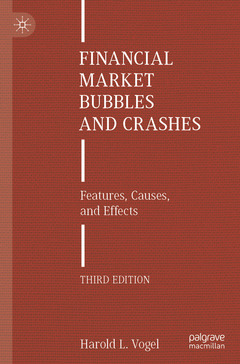Financial Market Bubbles and Crashes (3rd Ed., 3rd ed. 2021) Features, Causes, and Effects
Auteur : Vogel Harold L.

Economists broadly define financial asset price bubbles as episodes in which prices rise with notable rapidity and depart from historically established asset valuation multiples and relationships. Financial economists have for decades attempted to study and interpret bubbles through the prisms of rational expectations, efficient markets, equilibrium, arbitrage, and capital asset pricing models, but they have not made much if any progress toward a consistent and reliable theory that explains how and why bubbles (and crashes) evolve and are defined, measured, and compared. This book develops a new and different approach that is based on the central notion that bubbles and crashes reflect urgent short-side rationing, which means that, as such extreme conditions unfold, considerations of quantities owned or not owned begin to displace considerations of price.
Provides wide-ranging and thorough examples and explanations of how and why bubbles and crashes have historically developed and are tied to money, credit, trust, psychology, risk preferences, behavioral and structural aspects, and social mood
Covers the role of central banks and the relationship to commercial lending
Presents a new descriptive theory and practical empirical approach to the measurement, analysis, and prediction of extreme financial market conditions
Serves as a handy scholarly reference for further studies via extensive surveys of previous academic research and history and updates through the 2020 virus-related crash and remarkable rebound
Date de parution : 12-2022
Ouvrage de 579 p.
15.5x23.5 cm
Disponible chez l'éditeur (délai d'approvisionnement : 15 jours).
Prix indicatif 63,29 €
Ajouter au panierDate de parution : 12-2021
Ouvrage de 579 p.
15.5x23.5 cm



